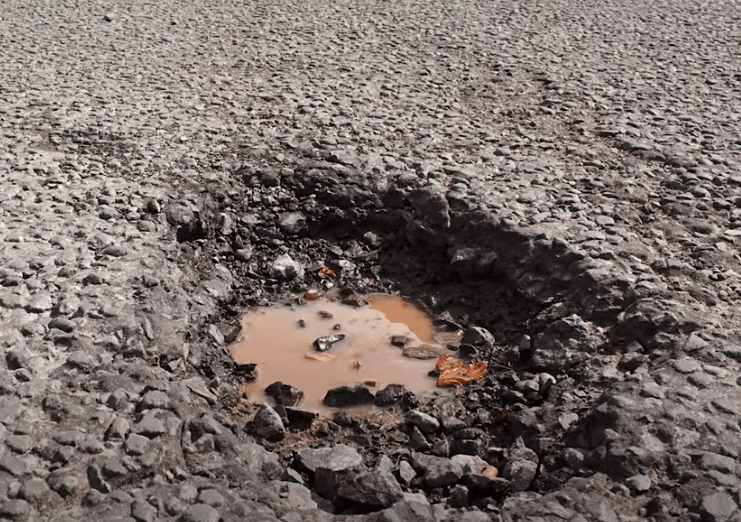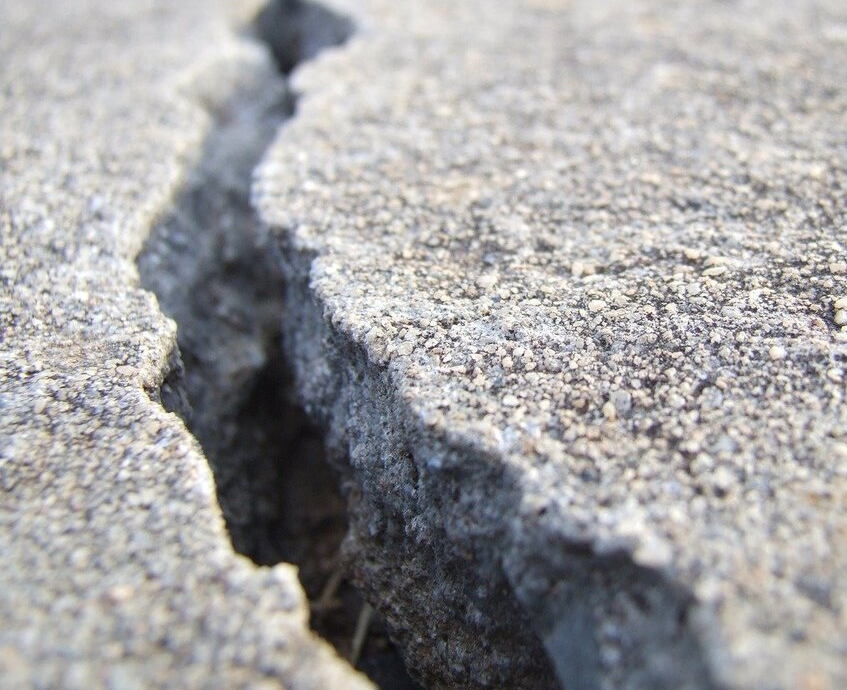here to patch things up.
Asphalt Patching & Repair
Do we dare bring up those pothole demons again?
Potholes and breaks in pavement are hazardous for both pedestrians and vehicles. If you're dealing with either of these problems, please call us out for an evaluation. We'll be able to tell you if your asphalt can be patched, or if there's a larger issue that needs to be addressed to prevent it from happening again in the future.
Asphalt Crack & Pothole Patching
Asphalt is a mixture of aggregates--crushed stone--and binders that act as the glue that holds that mixture together. When freshly paved, asphalt is a deep, rich black color. As the years go by, UV rays from the sun will inevitably break down those binding materials, which allows moisture to seep in and fill in the gaps left behind. That moisture causes the aggregates to expand and contract, which compromises the integrity of the pavement over time. This process causes the color of the asphalt to turn from that deep black color to a light grey. If it continues, the binding materials become weak to the point of completely losing their bond to the aggregates. This is when cracks and potholes begin to develop.
RockSolid Asphalt Paving Riverside has a number of methods for proper asphalt patching to help extend the life cycle of your investment.
Asphalt Repair Methods
- Throw-and-Roll - A temporary patching technique in which liquid asphalt is filled into a hole and then rolled over. The liquid asphalt solidifies as it reacts in the air and may be applied in layers. This is ideal for conditions where a quick or emergency fix is needed.
- Spray Injection - First, special truck-mounted equipment is used to blow water and debris out of the crack or pothole. Then aggregate and emulsion is injected into it at such a high pressure that no compaction is required. This is ideal for adverse conditions and is often preferred to the throw-and-roll method, which is temporary.
- Semi-Permanent Patch -
Water and debris are first removed with the help of a broom or air compressor to properly prepare the surface. Then the area that needs to be patched is cut back with a hand tool or power equipment. This prepared hole is then filled with patching mix and compacted with a roller.
- Full-Depth Patch - This is considered to be a permanent repair. The patching area is excavated to a depth of 4 inches or more, and extended at least one foot into the surrounding area to provide a firmer support. Then a tack coat mixed is applied, followed by the asphalt mix and finally a backfill to ensure proper bonding of the aggregate.
Asphalt Repair FAQs.
Putting off Asphalt Repairs Can Be Costly
It's best to take care of small issues before they grow into much bigger ones. If you choose to wait to fix cracks and potholes that appear in your asphalt, not only can they pose a safety issue for any pedestrians, but water can erode the base, resulting in complete failure. An asphalt repaving job will cost thousands more than a repair job. Hiring RockSolid Asphalt Paving Riverside to complete a repair job will save you a lot in the long run. Keep your asphalt smooth and problem-free by contacting us today.




